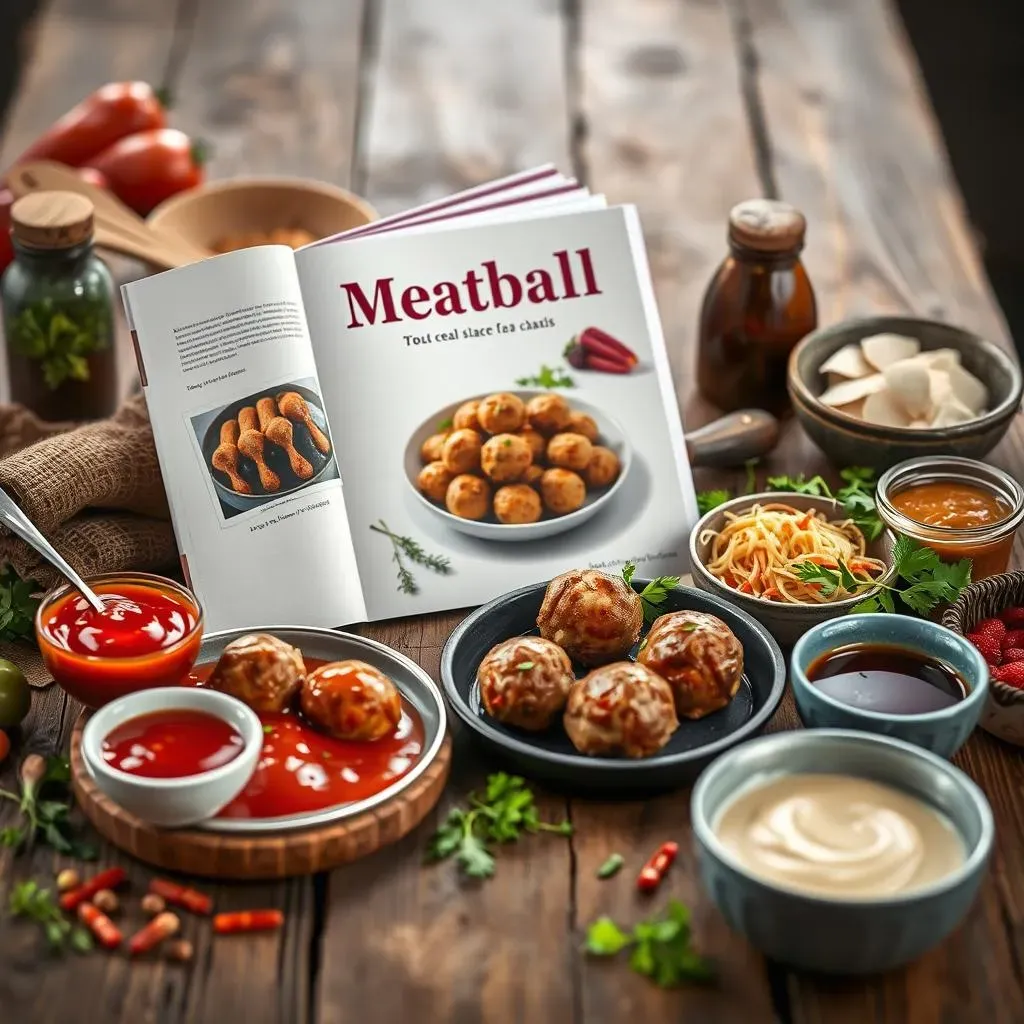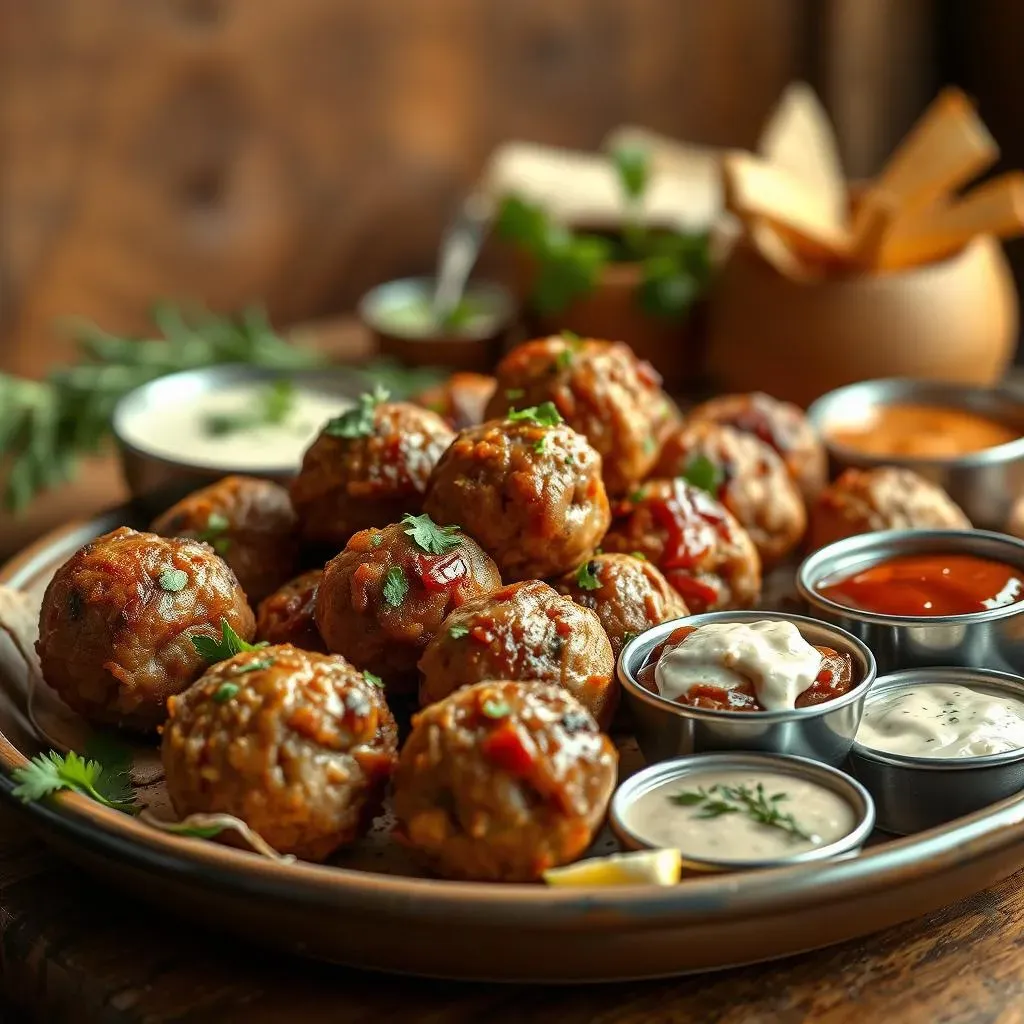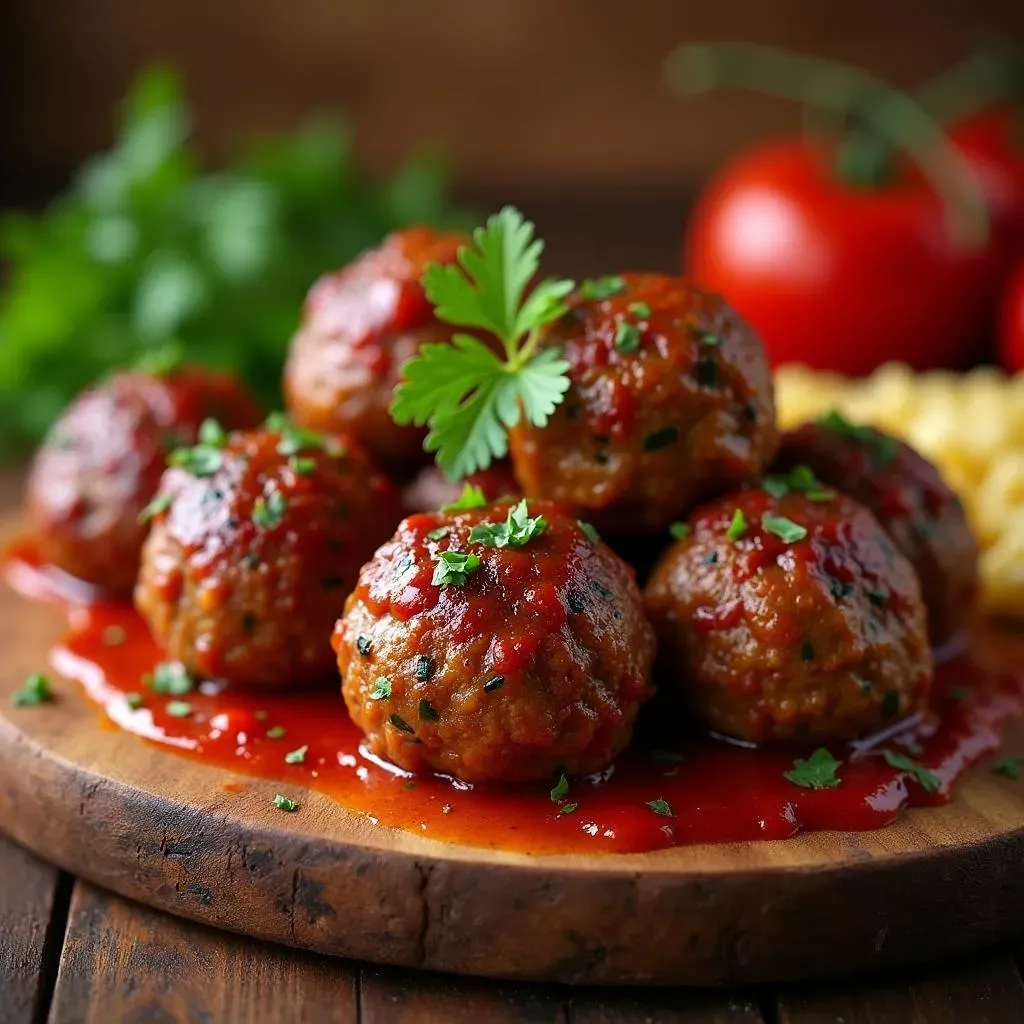Table of Contents
Are you ready to elevate your cooking game and impress your friends and family with unbelievably delicious meals? Then get ready to explore the wonderful world of pork and beef meatball recipes! This comprehensive guide dives deep into the art of crafting the perfect meatball, blending the rich flavors of pork and beef for an unforgettable culinary experience. We'll start by exploring the fundamental techniques that guarantee juicy, tender, and perfectly seasoned meatballs every single time. Next, prepare to be amazed by a collection of mouthwatering variations on classic pork and beef meatball recipes, from traditional Italian-style marinara delights to exciting and innovative global interpretations. We'll uncover secret tips and tricks from seasoned chefs, ensuring your meatballs are not only delicious but also visually stunning. Get ready to unlock your culinary potential and become a meatball master! Let's embark on this flavorful adventure together, and discover your new favorite pork and beef meatball recipes.
Mastering the Art of Pork and Beef Meatball Recipes

Mastering the Art of Pork and Beef Meatball Recipes
The Perfect Meat-to-Binder Ratio
Let's talk about the foundation of any great meatball: the balance between meat and binder. Think of it like building a house; you need a strong framework (the meat) and something to hold it all together (the binder). For pork and beef meatballs, a common ratio is 50/50, but feel free to experiment! More pork will give a sweeter, slightly more delicate flavor, while more beef delivers a richer, more savory punch. A good binder is key to juicy meatballs that hold their shape. Breadcrumbs, soaked in milk or water, are a classic choice, adding moisture and structure. You can also use finely grated parmesan cheese, or even a touch of ricotta for extra richness. Experiment with different combinations to find your perfect balance!
Don't forget the seasoning! This is where you truly bring your meatballs to life. A simple blend of salt, pepper, garlic powder, and onion powder is a great starting point. But don't be afraid to get creative! Fresh herbs like parsley, oregano, and basil add wonderful layers of flavor. A pinch of red pepper flakes can provide a delightful kick. Remember, taste as you go; adjust seasonings to your preference. For inspiration, check out our recipe for beef and pork meatballs for a great starting point.
Meat Type | Flavor Profile | Binder Suggestion |
|---|---|---|
Mostly Pork | Sweet, Delicate | Milk-soaked breadcrumbs |
Mostly Beef | Savory, Rich | Parmesan cheese & breadcrumbs |
50/50 Blend | Balanced, Versatile | Ricotta cheese & breadcrumbs |
Cooking Methods: Baking vs. Frying
Now, let's talk cooking methods. Baking and frying are the two most popular ways to cook meatballs. Baking is generally healthier, as it requires less oil. It also produces meatballs that are consistently cooked throughout and easier to handle in large batches. Frying, on the other hand, gives meatballs a wonderfully crispy exterior. However, it requires more attention to prevent burning, and the extra oil adds calories. For perfectly browned baked meatballs, try using a high-heat oven (400°F or higher) and arranging them in a single layer on a baking sheet. If you prefer frying, use a medium-high heat and ensure the oil is hot enough before adding the meatballs. Don't overcrowd the pan, as this will lower the oil temperature and result in greasy meatballs. If you want to explore frying, check out our best meatball recipe with ground beef for a good example.
Consider your time constraints and preferences when choosing a method. Baking is often quicker and easier for large quantities, while frying offers a unique textural experience. Whichever method you choose, ensure your meatballs are cooked through and have reached an internal temperature of 165°F (74°C) to ensure food safety. For tips on reheating, check out our guide on reheating beef meatballs.
- Baking: Healthier, even cooking, easier for large batches
- Frying: Crispy exterior, requires more attention, adds calories
Sauce it Up: The Perfect Complement
Finally, let's discuss the all-important sauce! The sauce is more than just a condiment; it's an integral part of the meatball experience. A simple marinara sauce is a classic pairing, offering a rich, tangy counterpoint to the savory meatballs. But the possibilities are truly endless! Creamy tomato sauces, spicy arrabiata, even a simple pesto can transform your meatballs into something truly special. Experiment with different herbs, spices, and cheeses to create your signature sauce. For example, a creamy mushroom sauce would be amazing with our best beef meatballs.
Remember, the sauce should complement, not overpower, the meatballs. Consider the flavor profiles of your meatballs and choose a sauce that enhances those flavors. A rich, savory meatball might pair well with a bright, acidic sauce, while a milder meatball could benefit from a richer, creamier sauce. Don't be afraid to experiment and find your perfect match! For a diverse range of sauce ideas, explore more recipes on our site. The best part? You can freeze leftover meatballs for later use. Learn how to freeze beef meatballs properly.
Delicious Variations on Pork and Beef Meatball Recipes: From Classic to Creative

Delicious Variations on Pork and Beef Meatball Recipes: From Classic to Creative
Delicious Variations on Pork and Beef Meatball Recipes: From Classic to Creative
Let's get creative! While classic Italian-style pork and beef meatballs are always a winner (check out our pork and beef meatball recipe for a fantastic example), don't be afraid to branch out. Think global! Imagine succulent meatballs in a rich, fragrant Thai green curry sauce, or perhaps a zesty, Mediterranean-inspired lemon-herb sauce. The possibilities are endless!
For a taste of adventure, consider incorporating different spices and herbs. A Moroccan-spiced meatball with warming cinnamon and cumin, served with a creamy yogurt sauce, would be a delightful twist. Or, for a fiery kick, try adding chipotle peppers or gochujang paste to your meat mixture for a smoky, spicy meatball. Don't forget about the fun of adding different cheeses! Feta, goat cheese, or even a sharp cheddar can add a surprising depth of flavor. Need a quick recipe? Try our quick beef meatball recipe.
- Thai Green Curry Meatballs
- Moroccan Spiced Meatballs
- Spicy Gochujang Meatballs
- Mediterranean Lemon-Herb Meatballs
Another exciting way to shake things up is by changing the shape and size of your meatballs. Instead of the traditional round shape, try making them into flat patties for easier grilling or baking. Or, go for mini meatballs, perfect for appetizers or adding to soups and stews. Experiment with different sizes to find your perfect bite. For a different approach, look at our easy beef meatballs recipe.
Don't limit yourself to just ground pork and beef. Get creative with your meat combinations! Try adding ground lamb for a richer, gamier flavor, or substitute turkey or chicken for a leaner option. You can even incorporate finely chopped vegetables, such as zucchini or mushrooms, into the meat mixture for added texture and nutrients. For a leaner option, check out our comparison of beef vs. chicken meatballs.
Meat Combination | Flavor Profile | Suggested Sauce |
|---|---|---|
Pork & Beef | Classic Savory | Marinara |
Pork, Beef & Lamb | Rich & Gamey | Mint Yogurt Sauce |
Turkey & Beef | Lean & Savory | Pesto |
Tips and Tricks for Perfect Pork and Beef Meatballs Every Time

Tips and Tricks for Perfect Pork and Beef Meatballs Every Time
Gentle Handling for Juicy Meatballs
The key to incredibly juicy meatballs lies in gentle handling. Avoid overmixing the meat mixture; this can lead to tough meatballs. Just combine the ingredients until they're mostly incorporated. Think of it like making a delicate cake – you don't want to overmix the batter! When forming the meatballs, use your hands lightly, rolling them gently into balls. Don't squeeze them too tightly, as this will force out the juices and result in dry meatballs. For perfectly formed meatballs, try dipping your hands in cold water between each roll. This prevents the meat from sticking to your hands, making the process much smoother. Looking for more tips? Check out our best ground beef meatball recipe for more detailed instructions.
Another important factor is the size of your meatballs. Smaller meatballs cook more quickly and evenly than larger ones. Aim for a consistent size, about 1-1.5 inches in diameter. This ensures that they cook through at the same rate, preventing some from being undercooked while others are overcooked. For a more visually appealing presentation, consider using a small ice cream scoop to portion out the meat mixture. This gives you perfectly uniform meatballs every time. Want to explore different sizes? Check out our 1 lb beef meatball recipe for ideas.
- Avoid overmixing the meat.
- Roll gently, don't squeeze.
- Dip your hands in cold water.
- Aim for consistent size (1-1.5 inches).
Pre-baking and Simmering Secrets
For extra flavor and a melt-in-your-mouth texture, consider pre-baking your meatballs before adding them to your sauce. This initial baking step helps to set the meatballs and develops a beautiful brown crust. Then, simmering them gently in your chosen sauce allows the flavors to meld and the meatballs to absorb the delicious sauce. This two-step process results in meatballs that are both flavorful and tender. For a similar approach, check our Italian-style beef meatball recipes.
When simmering your meatballs, keep the heat low and gentle. A rolling boil will only toughen the meatballs and break them apart. Low and slow is the way to go! Simmer until the meatballs are heated through and the sauce has thickened to your liking. This can take anywhere from 30 minutes to an hour, depending on the size of your meatballs and the thickness of your sauce. Want to learn how to reheat? See our instructions on reheating beef meatballs.
Step | Description | Time |
|---|---|---|
Pre-baking | Bake meatballs until lightly browned. | 15-20 minutes |
Simmering | Simmer gently in sauce until heated through. | 30-60 minutes |